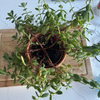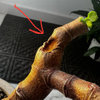Soil Amendments for Succulents
bronxfigs: New York City/7b
12 years ago
Featured Answer
Sort by:Oldest
Comments (11)
bikerdoc5968 Z6 SE MI
12 years agobronxfigs: New York City/7b
12 years agoRelated Professionals
Glassmanor Landscape Architects & Landscape Designers · River Forest Landscape Architects & Landscape Designers · Fort Wayne Landscape Contractors · Merced Landscape Contractors · West Coon Rapids Landscape Contractors · West Orange Landscape Contractors · Norwell General Contractors · Rock Island General Contractors · Summit General Contractors · Brushy Creek Carpenters · Canton Decks, Patios & Outdoor Enclosures · Huber Heights Decks, Patios & Outdoor Enclosures · North Aurora Decks, Patios & Outdoor Enclosures · Quincy Decks, Patios & Outdoor Enclosures · Roseville Decks, Patios & Outdoor Enclosuresbikerdoc5968 Z6 SE MI
12 years agobronxfigs: New York City/7b
12 years agojeepman69
12 years agozone 8
12 years agoxerophyte NYC
12 years agobronxfigs: New York City/7b
12 years agopirate_girl
12 years agotapla (mid-Michigan, USDA z5b-6a)
12 years ago
Related Stories

GARDENING GUIDESGardening Solutions for Dry, Sandy Soils
Has your desert or beachy site withered your gardening creativity? Try these ideas for a beautiful, easy-care landscape
Full Story
LANDSCAPE DESIGNHow to Shape a Rain Garden and Create the Right Soil for It
Learn how to grade, lay out and amend the soil in your rain garden to support your plants
Full Story
GARDENING GUIDESHouzz TV: Make a Worm Bin for Rich Soil and Happy Plants
A worm-powered compost bin that can fit under a sink turns food scraps into a powerful amendment for your garden. Here’s how to make one
Full Story
GARDENING GUIDESGrow a Beautiful Garden in Alkaline Soil
Got alkaline soil? Learn how to manage it and the many beautiful plants that will thrive in this ‘sweet’ soil
Full Story
GARDENING GUIDESGardening Solutions for Heavy Clay Soils
What’s a gardener to do with soil that’s easily compacted and has poor drainage? Find out here
Full Story
GARDENING GUIDESHow to Stop Worrying and Start Loving Clay Soil
Clay has many more benefits than you might imagine
Full Story
GARDENING GUIDESGet the Dirt on Your Garden’s Soil
Understand how your soil supports your plants so you can ensure your garden’s success
Full Story
GARDENING GUIDESHave Acidic Soil in Your Yard? Learn to Love Gardening Anyway
Look to acid-loving plants, like conifers and rhododendrons, to help your low-pH garden thrive
Full Story
CONTAINER GARDENSContainer Gardening Basics: The Dirt on Soil
Learn the types of potting soil available and the best mixes to help your containers thrive
Full Story
LANDSCAPE DESIGNFlood-Tolerant Native Trees for Soggy Soil
Swampy sites, floodplains, even standing water ... if you've got a soggy landscape, these trees are for you
Full Story








bronxfigs: New York City/7bOriginal Author